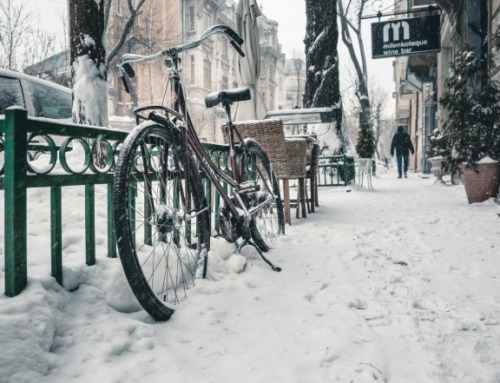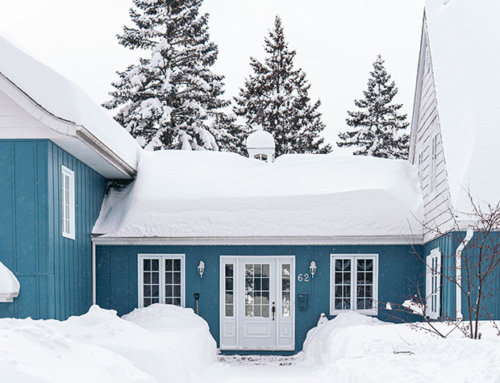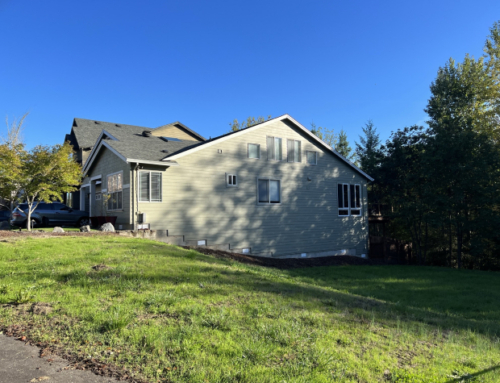The Pacific Northwest is expecting a “La Nina” winter for 2024-2025. That means more snow. If you have a crawl space home then preparing for a snowstorm well in advance is highly recommended. Winter storms can cause extreme cold temperatures, hazardous roads due to ice, power outages and loss of communication services. These conditions pose significant safety risks, so it is crucial to plan ahead accordingly.
When you hear this: Winter weather advisories are in effect, please take caution, you will want to follow these tips to prepare your home, family members and vehicles for a snowstorm in advance…
During the winter months, snowstorms and freezing rain are common occurrences that can cause dangerous driving conditions. Winter storm warnings are typically issued by meteorologists 12 to 24 hours before these types of weather events occur in your area. It’s important to stay informed about incoming severe weather by monitoring news reports or signing up for smartphone alerts so you have enough time to prepare.
But 12-24 hours is not enough time to prepare your crawl space home for these freezing temperatures.
4 Tips to be Prepared for a Winter Storm (yes, it is going to be freezing cold outside)
- Develop a communication strategy to ensure that your loved ones are safe before and after a weather event. This is crucial for your family’s safety. Make a plan with your family, neighbors, friends to be sure you can stay connected during a snowstorm. Consider all possible scenarios, record your plan and share it with everyone. Practice it occasionally to guarantee its effectiveness and that everyone is ready for any emergencies.
Make sure that all participants have a copy of the plan, both digital and printed versions. Keep it in a secure location for easy accessibility. Include your elderly neighbors…
- Prepare your Crawl Space Home for the onslaught of snow and freezing temperatures. Here are some more great ideas:
- If you live in a crawl space home, then close your crawl space vents… it is extremely critical to avoid the excessive cost of repairing frozen water pipes under your home. Go to com for a highly recommended, 5 Star solution to your crawl space needs. Leaving your foundation vents open in the cold, cold weather (or the hot, hot weather) is no longer recommended. In fact, it is a very bad idea!
You need to know that when it is 30 degrees outside then it is 30 degrees in your crawl space if you don’t close your foundation vents… and those thin plastic pieces inside your crawl space vents are not nearly enough to keep the winter cold out. In the past your only option was to use those crumbly, easy to break Styrofoam inserts… now there is a much better alternative to protect your crawl space from the cold – Vanity Vents Insulation Blocks (military grade, up to 50 year life, marine grade and they create a tight seal to keep the cold out being over 2 inches thick). Likewise, when you also use Vanity Vents Vent Covers over the Vanity Vents Insulation Block you create a double layer of insulation while creating instant curb appeal
And remember, if you have a crawl space home that about 60% of the air in your home comes from your crawl space (it’s called the “Stack Effect”) so your furnace has to work extra hard to warm up all the cold air being sucked up from your crawl space into your interior living space. That cold air is costing you a lot of extra money on your utility bills.
- Here are some more general tips to help you get started protecting your home this winter:
- Have a snow shovel handy to keep walkways clear and safe. Use an ice melt product to help you with ice removal.
- Check and replace any worn or damaged exterior caulking around doors and windows to prevent drafts from entering your home.
- Inspect your roof for leaks or damage and repair as needed before the onset of colder temperatures.
- Clear gutters and downspouts of debris so melting snow and ice can flow freely away from your home.
- Ensure that smoke detectors and carbon monoxide alarms have fresh batteries and are in good working order.
- Ensure that you adhere to the manufacturer’s guidelines when utilizing plastic window insulation. This is particularly crucial if your windows are old and prone to drafts, as it can help keep freezing air out of your home.
- Use your generator only in well-ventilated areas. Set up the generator outside before use to ensure safety.
- When it comes to heating your home:
- It is advisable to buy fuel in advance when a storm is forecasted. If you rely on oil or propane, ensure that you have enough supply for your backup heating system or generator. Additionally, keep an emergency reserve of fuel as it might be unsafe to travel and obtain supplies during the storm.
- Ensure your furnace or boiler is checked before the start of every winter season. A qualified technician should inspect your flue vent and heating system to ensure it is functioning correctly, which can help prevent breakdowns during a storm when you need heat most.
- Check to see that you have a sufficient amount of wood, pellets, kindling, lighters and matches to keep yourself warm and comfortable during the crisis.
- It is not advisable to utilize cooking appliances such as ovens and ranges for heating purposes in your home.
- Ensure your chimney or flue is checked frequently. If you are planning to use a fireplace or wood stove, it is recommended that you have it examined and maintained/cleaned by an expert on a regular basis.
- Make sure to have fire extinguishers within easy reach. Check them regularly to ensure they are functioning properly and keep them near heating sources such as fireplaces, stoves, and furnaces.
- Candles can be used safely by ensuring they are not left unattended and kept away from flammable materials. As an alternative, battery-powered LED lights are a safe and energy-efficient option to traditional candles.
- Remove any weak or overhanging branches from your property. This includes those that are near your roof or house as they could potentially break off and cause damage during heavy snowfall, strong winds, or other severe weather conditions.
- During winter, it is essential to have warm clothes and extra blankets on hand. Additionally, stock non-perishable food items and necessary medications for several days/weeks. Make sure you also have bottled water, batteries, flashlights, a first-aid kit, and other emergency supplies in case of power outages.
- Ensure your electronic devices are fully charged and have backup power sources available to avoid being caught off guard during a power outage. Keep smartphones, tablets, and computers at full battery capacity for emergency situations.
- Keep a battery-powered radio in your home to stay informed about changing weather conditions.
- In the event of online entertainment being unavailable, it is advisable to keep cards, puzzles and board games on hand for some fun.
- Last but not least, make sure you have adequate insurance coverage to protect yourself from financial loss due to winter snowstorm damage. Call you agent for a quick pre-season check up… they will be happy to do it for free.
You know what they say… Make the Plan and Work the Plan. Get started so you will be prepared for a chilly winter this year.
VanityVents
info@vanityvents.com







